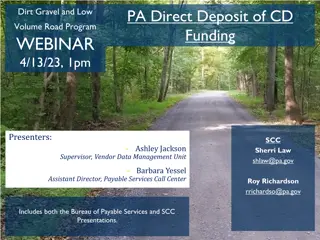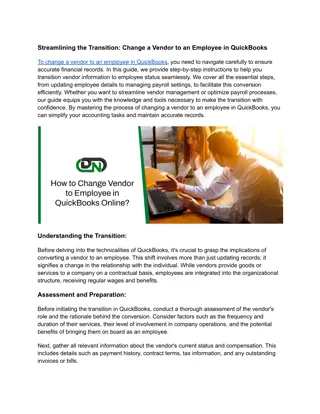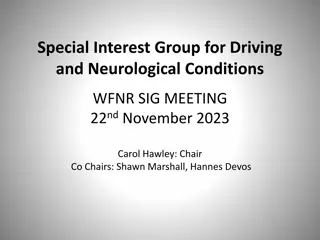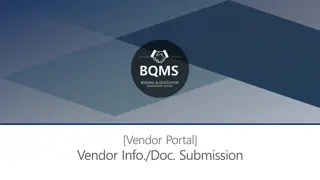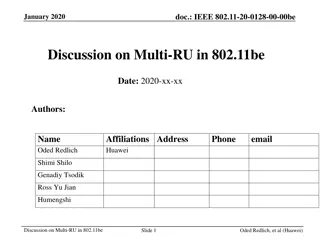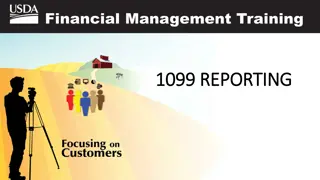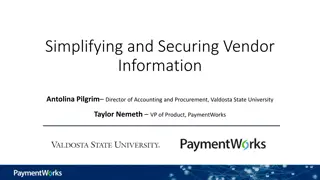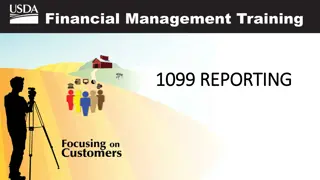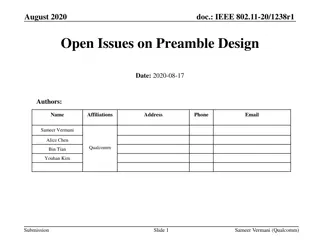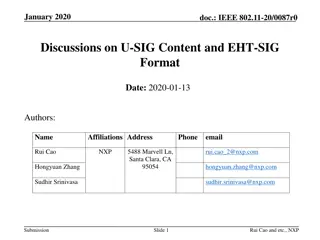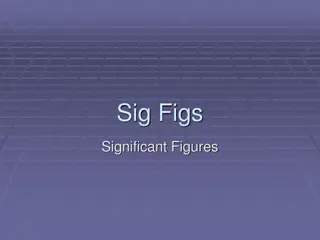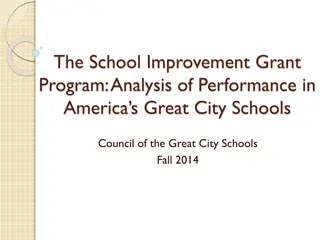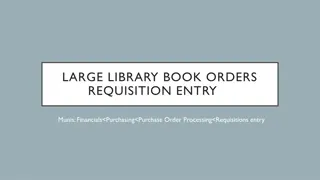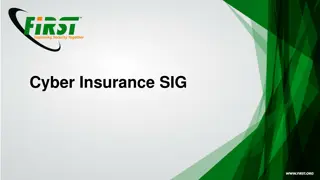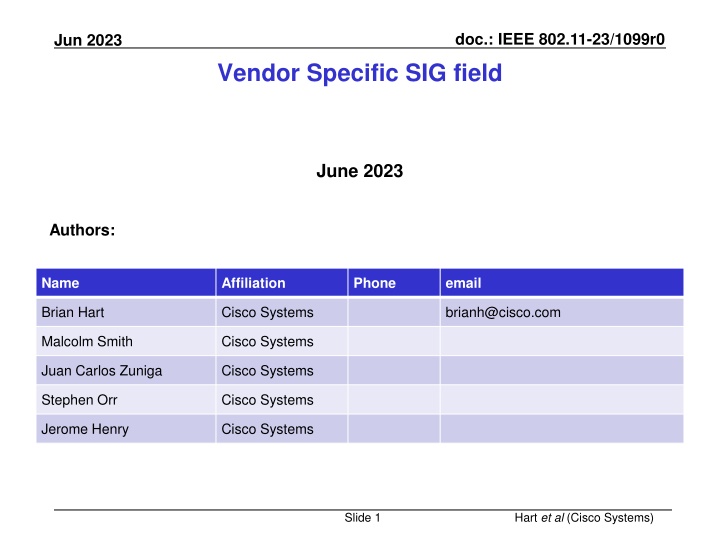
IEEE 802.11-23/1099r0 Vendor Specific SIG Field Proposal
In this document, the authors discuss the need to signal proprietary PHY-layer features in PPDUs, how to ensure signaling is understood within the ecosystem, and the challenges of conforming to the 802.11 standard. They propose the inclusion of a Vendor Specific SIG field to preserve reserved U-SIG bits for future PHY amendments, detailing the structure and options for this field. This proposal aims to support safe experimentation and prototyping while maintaining compatibility with existing and future 802.11 devices.
Download Presentation

Please find below an Image/Link to download the presentation.
The content on the website is provided AS IS for your information and personal use only. It may not be sold, licensed, or shared on other websites without obtaining consent from the author. If you encounter any issues during the download, it is possible that the publisher has removed the file from their server.
You are allowed to download the files provided on this website for personal or commercial use, subject to the condition that they are used lawfully. All files are the property of their respective owners.
The content on the website is provided AS IS for your information and personal use only. It may not be sold, licensed, or shared on other websites without obtaining consent from the author.
E N D
Presentation Transcript
doc.: IEEE 802.11-23/1099r0 Jun 2023 Vendor Specific SIG field June 2023 Authors: Name Affiliation Phone email Brian Hart Cisco Systems brianh@cisco.com Malcolm Smith Cisco Systems Juan Carlos Zuniga Cisco Systems Stephen Orr Cisco Systems Jerome Henry Cisco Systems Slide 1 Hart et al (Cisco Systems)
doc.: IEEE 802.11-23/1099r0 Jun 2023 Ever since 802.11a, silicon vendors have added proprietary PHY-layer features to PPDUs despite the lack of conformant paths Goals: Signal the presence of proprietary PHY-layer features in PPDUs Have the signaling be understood by devices in their eco-system Avoid confusing devices outside their eco-system And conform to the 802.11 standard Practical reality Use reserved bit(s) in a SIG/Service field Use upper-layer vendor-specific capability signaling, and only enable the feature when nearby to other devices in the same eco-system Doesn t conform to the 802.11 standard; the use of reserved bits might clash/conflict with the use of reserved bits by devices outside their eco-system Stakes are raised with U-SIG This needs to support many generations of 802.11 MAC/PHY amendments and many vendors Slide 2 Hart et al (Cisco Systems) Hart et al (Cisco Systems)
doc.: IEEE 802.11-23/1099r0 Jun 2023 and Vendor Specific Extensions nourish safe experimentation and prototyping The MAC has rich and mature mechanisms for safe featureexperimentation, prototyping and deployment Vendor Specific elements Vendor Specific subelements Vendor Specific Action frames Vendor Specific Public Action frames Some of these proprietary features didn t work out, and did not burden the 802.11 standard Some of these proprietary features created high value and were returned to 802.11 and have been proposed/accepted as standardized features i.e., vendor specific extensions support a rich and healthy 802.11 eco-system However, the PHY lacks these facilities Slide 3 Hart et al (Cisco Systems) Hart et al (Cisco Systems)
doc.: IEEE 802.11-23/1099r0 Jun 2023 Proposal: define and signal the presence of a Vendor Specific SIG field to preserve the remaining reserved U-SIG bits for future PHY amendments U-SIG field: a field to indicate the absence/presence of the VS SIG field and include new version (Validate) when present VS-SIG field: traditional SIG design with BCC, 1SS and 20 MHz-duplication: Option A: MCS0, 1 OFDM symbol, or Option B: A small selection of low MCSs and numbers of OFDM symbols VS SIG UHR SIG UHR STF UHR LTF LSTF LLTF LSIG RLSIG USIG Data PE 4 usec / 4 or 8 usec Two parts of U-SIG Number of bits Bit Field Description 0: No VS SIG field 1: VS SIG field using MCS0 and 1 OFDM symbol / 0: No VS SIG field 1: VS SIG field using MCS0 and 1 OFDM symbol 2: VS SIG field using MCS1 and 1 OFDM symbol 3: VS SIG field using MCS0 and 2 OFDM symbols Set to all 1s and treat as Disregard. B20 / B20-B21 1 / 2 VS SIG Info U-SIG-1 B20B21/22- Disregard Slide 4 Hart et al (Cisco Systems) Hart et al (Cisco Systems)
doc.: IEEE 802.11-23/1099r0 Jun 2023 wherein 1 / 2 examples of the potential VS SIG binary fields are: 26 bits available (MCS0, 1 OFDM symbol) 52 bits available (MCS1 or 2 OFDM symbols) Bitwidth 16 1 25 4 6 Description Vendor ID VS Validate Vendor Specific Content CRC Tail Bitwidth 9 1 6 4 6 Description Vendor ID VS Validate Vendor Specific Content CRC Tail 24 1 17 Vendor ID: 9-bit and 16-bit Vendor IDs are a finite resource and must be limited to genuine silicon vendors - might be assigned judiciously by 802.11 ANA and acclaimed by a WG vote 24-bit Vendor ID = OUI; allocated in the usual way (no need to support OI) VS Validate: 0 (continue receiving PPDU whether or not VS signaling is known), 1 (continue receiving PPDU if VS signaling known; otherwise just assert CCA busy required for the rest of the PPDU) Vendor Specific Content = not specified by 802.11 Slide 5 Hart et al (Cisco Systems) Hart et al (Cisco Systems)
doc.: IEEE 802.11-23/1099r0 Jun 2023 Receive Procedure A. A UHR STA that receives a UHR PPDU identifies the presence and duration of the VS SIG field B. If the VS-SIG field is present: 1. If the VS SIG CRC is bad: a. The STA may stop processing the PPDU or skip over the VS-SIG (with unchanged CCA requirements either way) 2. Else: a. If the STA understands the VS signaling*, the STA processes the PPDU using the vendor extensions b. Elseif the VS Validate field equals 0, the STA processes the PPDU without the vendor extensions c. Else (VS Validate field equals 1) the STA stops processing the PPDU (with unchanged CCA requirements) * VS signaling = Vendor ID + any portions of the Vendor Specific Content that have Validate semantics too. Slide 6 Hart et al (Cisco Systems) Hart et al (Cisco Systems)
doc.: IEEE 802.11-23/1099r0 Jun 2023 Summary We propose a way to future proof the U-SIG field even when there are vendors that seek to incorporate vendor specific features The overhead is 1-2 bits in the U-SIG field for disinterested vendors The overhead is 4-8 usec for vendors seeking to incorporate vendor specific features, and offers circa 6-17-25 bits for vendor specific content for signaling vendor specific PPDU extensions. Slide 7 Hart et al (Cisco Systems) Hart et al (Cisco Systems)
doc.: IEEE 802.11-23/1099r0 Jun 2023 Backup Slide 8 Hart et al (Cisco Systems) Hart et al (Cisco Systems)
doc.: IEEE 802.11-23/1099r0 Jun 2023 Hypothetical Examples where Vendor Specific Signalling is needed for (UL/DL, VS Validate = 0/1): UL MU PPDU indicates VS Validate = 0 and: o TX reports it is currently moving at high speed; or not o TX reports is has extra-low low phase noise / amplitude wander / EVM transmitter; or not o UL MU PPDU indicates VS Validate = 1 and: o Sends a VS constellation/code rate/FEC o DL PPDU* indicates VS Validate = 0 and: o Sends standardized constellations/code rates/FECs to users outside the ecosystem and VS constellations/code rates/FECs to individual users (or groups of users) within the ecosystem o DL PPDU* indicates VS Validate = 1 and: o Uses an extra-short GI for the Data field o *For when BSS Color and STA-ID are not locally unique; or when the RX HW is virtualized and the RX is in communication with other APs/GOs, etc Slide 9 Hart et al (Cisco Systems) Hart et al (Cisco Systems)

